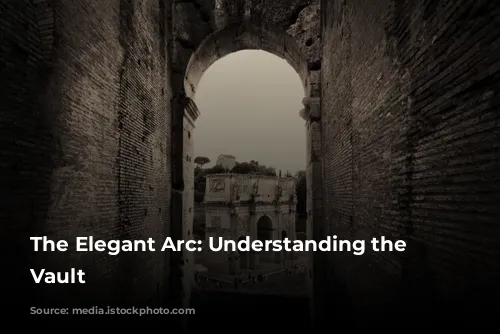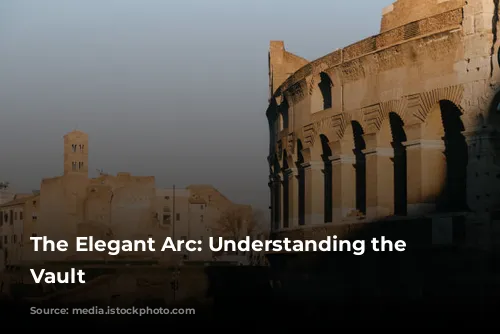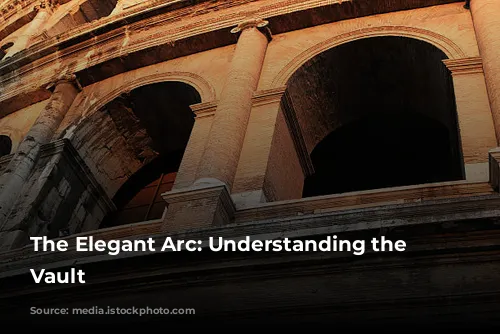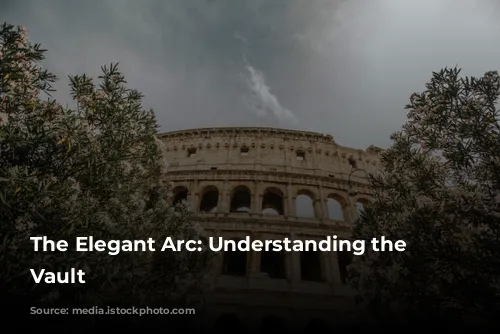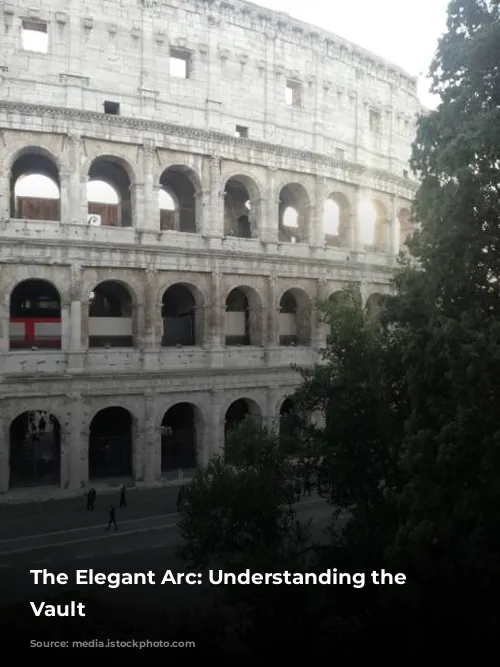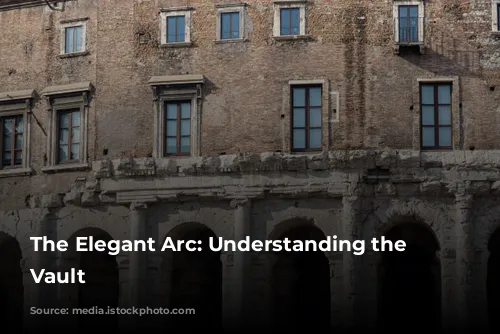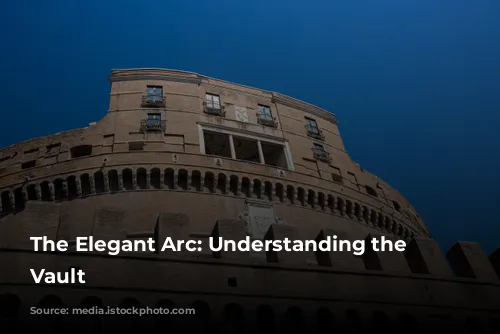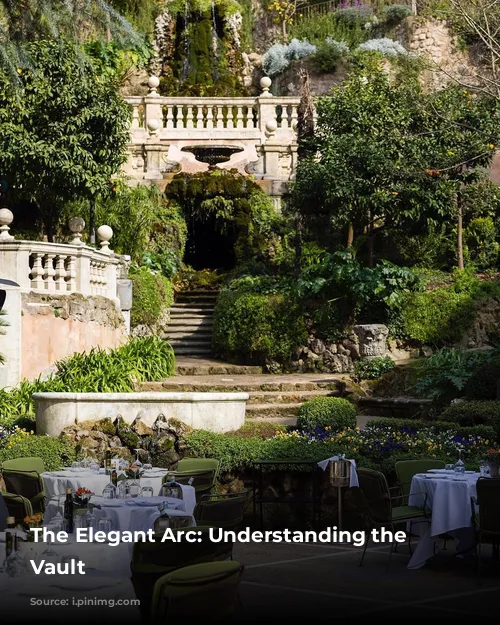Imagine a beautiful, curved ceiling spanning a grand hallway or a towering church nave. That’s the barrel vault, a simple yet elegant architectural element that has graced buildings for millennia. But what exactly is a barrel vault, and why is it so special?
This article will take you on a journey through time, exploring the origins, evolution, and enduring impact of the barrel vault. We’ll uncover its fascinating history, delve into its architectural significance, and discover how it continues to inspire innovative designs in modern times.
A Simple Concept, Timeless Impact
At its core, the barrel vault is formed by extending a single curve, typically a circular arc, over a specific distance. This creates a semi-cylindrical structure, resembling a tunnel or a half-pipe. It’s like a series of arches seamlessly joined together, creating a strong and visually striking roof.
While its basic design might seem straightforward, the barrel vault presents unique challenges. The outward push, known as lateral thrust, created by the arch needs to be managed. One method is to construct thick, sturdy walls to absorb this force. However, a more refined approach involves building multiple vaults parallel to each other, allowing their forces to counteract one another. This method was particularly popular in churches, where parallel vaulted naves spanned the length of the building. However, the outer walls still required reinforcement, often achieved through buttressing. The most elegant solution was to create a groin vault, formed by the intersection of two barrel vaults at right angles. This cleverly directs the forces downward, reducing the need for heavy walls.
From Ancient Origins to Modern Applications
The barrel vault’s story is as rich and diverse as its applications. Early civilizations, including the Ancient Iranians, Egyptians, and Indus Valley people, all utilized this structure. However, it was the Persians and Romans who truly embraced it, integrating it into monumental projects. They were the first to extensively employ scaffolding, enabling them to construct vaults spanning larger distances than ever before.
The Romans, in particular, found creative ways to use the barrel vault. They employed it to replace the Cloaca Maxima, an ancient sewer system, with a network of underground tunnels. The Ramesseum, a magnificent Late Egyptian mortuary palace-temple, also featured barrel-vaulted structures. Even ancient Greeks, as evidenced by archaeological discoveries in Hellenistic Sicily, demonstrated their understanding of the technique.
Interestingly, the barrel vault often found its way into underground structures, like drains and sewers. This suggests that its early use was driven by practical needs, particularly in regions where timber was scarce. Sumerian ziggurats, built with fired bricks and clay mortar, provide some of the earliest examples of this construction method.
A Renaissance and Beyond
After the fall of the Roman Empire, barrel vaults saw a resurgence in the early Romanesque period. Grand cathedrals, like the Cluny Abbey, were erected, their interiors characterized by thick walls necessary to support the massive vaulted ceilings. However, the dominance of the barrel vault waned with the advent of the Gothic style, which favored intricate groin vaults supported by elegant stone ribs.
The Renaissance and Baroque periods witnessed a renewed appreciation for classical architecture, leading to the reintroduction of the barrel vault on an even grander scale. Masterpieces like the Basilica di Sant’Andrea di Mantova by Leone Battista Alberti, San Giorgio Maggiore by Andrea Palladio, and the magnificent St. Peter’s Basilica in Rome all showcase the impressive scale and elegance of the barrel vault.
Engineering the Barrel Vault
Understanding the forces at play in a barrel vault is crucial. The downward force exerted by the arch’s crown must be balanced by the outward lateral force pushing against the walls. To prevent collapse, these forces need to be carefully managed through strong anchoring or buttressing. The thickness of walls, particularly in structures like Muchalls Castle in Scotland, demonstrates the importance of buttressing to ensure the stability of the curved design.
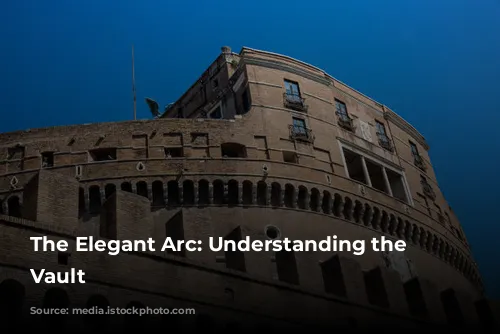
Challenges and Innovations
The barrel vault, while aesthetically pleasing, does present certain challenges. Lighting, for instance, can be a significant issue. The need to maintain the integrity of the arch system limits the placement of windows, requiring creative solutions like smaller openings, large buttresses, or internal cross-bracing. Monasteries, with their open courtyards and cloisters, often incorporated barrel-vaulted structures, allowing ample natural light to penetrate the spaces.
Modern engineering has brought new insights into the complexities of the barrel vault. Newtonian mechanics and finite element algorithms have enabled precise calculations of stress loads, offering a deeper understanding of the structure’s behavior. The barrel vault has even become a standard test for structural engineering computer models due to its complex stress patterns.
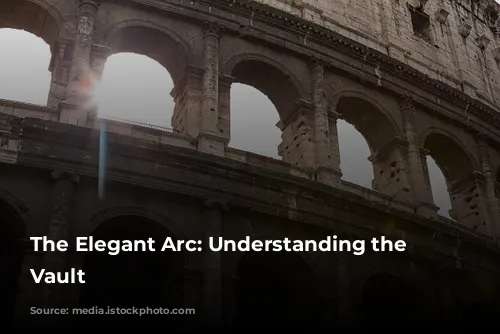
Enduring Legacy
The barrel vault, despite being a relatively simple design, offers remarkable strength and visual impact. While its use in grand architectural projects may have diminished in recent centuries, it remains a compelling form in both classical and modern contexts.
From its humble beginnings in underground structures to its majestic presence in some of the world’s most iconic buildings, the barrel vault continues to inspire awe and fascination. Its enduring legacy is a testament to its remarkable ability to combine practicality with beauty, a testament to the enduring power of architectural ingenuity.
